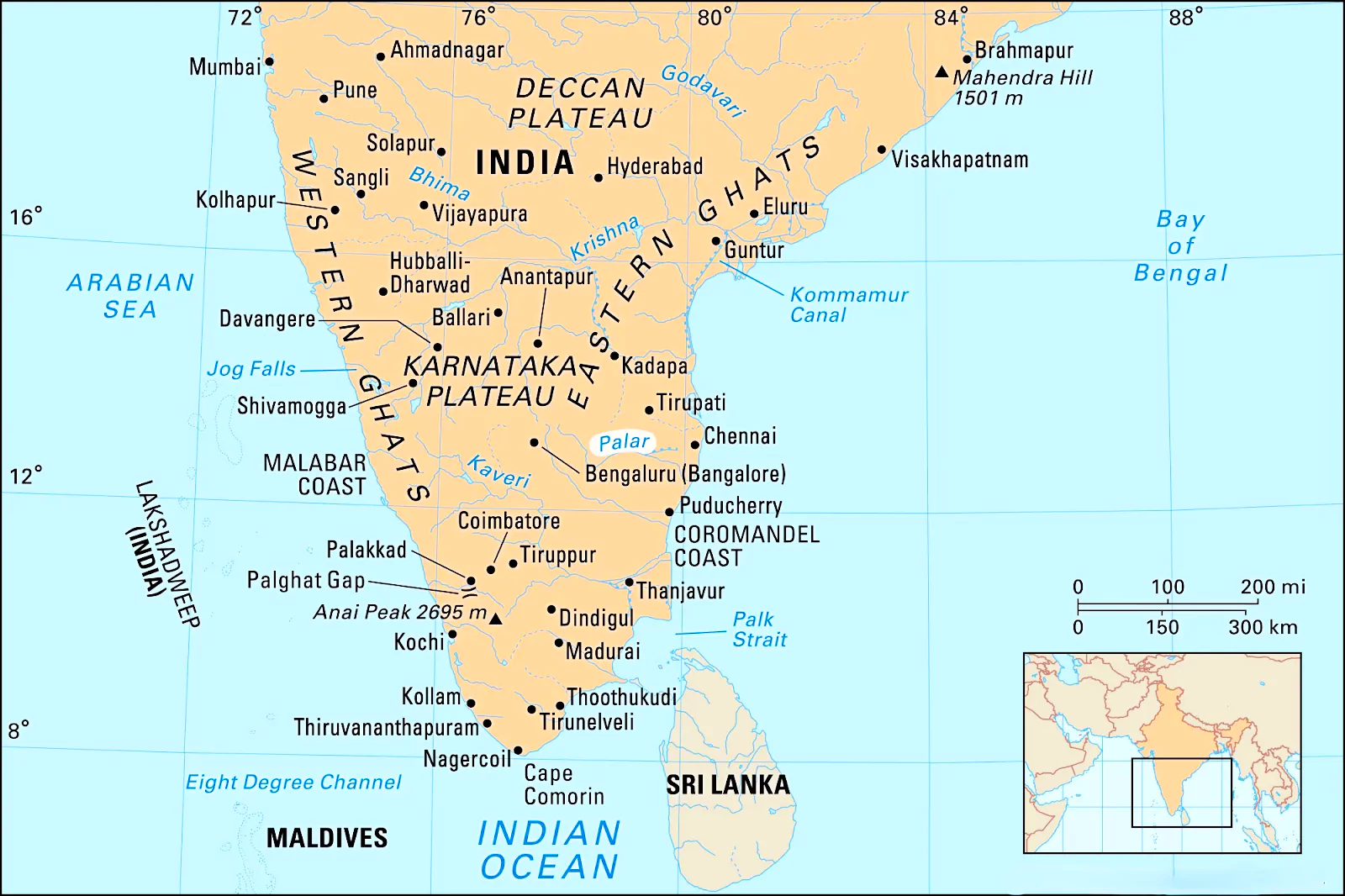The Supreme Court has ruled against the unchecked dumping of untreated effluents by tanneries into the Palar river in Tamil Nadu’s Vellore district.
- The court highlighted that pollution has severely affected the river, which is a crucial water source for farmers and local residents.
Palar River: An Overview
- The Palar River is an important river in southern India.
 Palar River, also known as Pālāṟu in Tamil, means “Milk River.
Palar River, also known as Pālāṟu in Tamil, means “Milk River.
- Origin and Course
- Source: Begins in the Nandi Hills, located in Chikkaballapura district, Karnataka.
- Path:
- Karnataka → Andhra Pradesh → Tamil Nadu
- Joins the Bay of Bengal near Vayalur, south of Chennai.
- Major Tributaries
- The Palar River has two key tributaries:
- Ponni River (Left Bank)
- Originates at 1,050 meters altitude in Chittoor district, Andhra Pradesh.
- Flows eastward and southeastward, joining the Palar near Walajapet.
- Cheyyar River (Right Bank)
- Originates in the Jawadhu Hills, Tiruvannamalai district, Tamil Nadu.
- Flows northeastward, merging with Palar near Tirumukkudal.
- Together, these two tributaries contribute to about one-fourth of the total catchment area of the Palar River basin.
- Irrigation and Dams
- Several dams and reservoirs have been built along the river, especially in Tamil Nadu.
- These structures help in storing and distributing water for irrigation.
Check Out UPSC Modules From PW Store
Environmental and Health Impacts of Untreated Effluents from Tanneries
- Water Pollution: Discharge of untreated effluents leads to contamination of water bodies, affecting aquatic life and making water unsafe for human consumption.
- Soil Degradation: Pollutants can seep into the soil, reducing its fertility and affecting agricultural productivity.
- Health Hazards: Exposure to toxic chemicals in effluents can cause serious health issues, including skin diseases, respiratory problems, and even cancer.
- Ecosystem Disruption: Pollution disrupts the natural balance of ecosystems, affecting biodiversity and the overall health of the environment.
Ready to boost your UPSC 2025 preparation? Join PW’s UPSC online courses today!
![]() 3 Feb 2025
3 Feb 2025

 Palar River, also known as Pālāṟu in Tamil, means “Milk River.
Palar River, also known as Pālāṟu in Tamil, means “Milk River.
